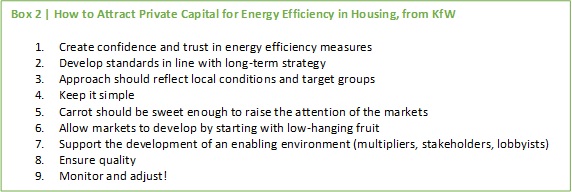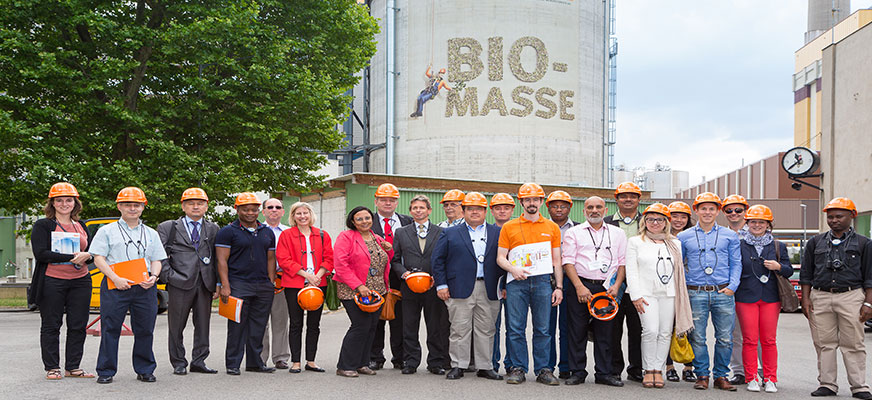News
Do you want to see what energy efficiency can do for a city?
Go no further than Austria’s capital, Vienna. Public transportation is smart, well integrated, efficient and well used. Half of the urban landscape is devoted to green open spaces, pedestrians and bike riders are king and many homes and buildings incorporate state of the art energy efficiency technologies. With all this in mind, Vienna—selected the world’s most livable city in 2015—became an obvious setting for ESMAP’s 2015 Knowledge Exchange Forum on Livable and Energy Efficient Cities in June.
Convening representatives from 14 developing countries and from the City of London, C40, the International Energy Agency, EBRD, WRI and KfW—the Forum was specifically focused on peer to peer sharing of solutions for city-level transformation.
The opening session featured a presentation from Californian urban design expert Peter Calthorpe who brought examples of urban revitalization in numerous cities in China, Mexico and the US, where the emphasis was on transportation planning, community livability, multi-modal street function and economic growth (see Box 1).

Then came a developing country example from the Colombian city of Bogota which, over 15 years and with support from the World Bank, managed to transform its once chaotic public transport system into a model for Bus Rapid Transit around the world.
Fernando Paez, the former general manager of Bogota’s transit system from 2000-2006 and now director of transport systems for EMBARQ-Mexico, guided forum participants through Bogota’s challenging process. “Bogota’s problem was that the city was not designed to facilitate people moving around,” he explained. “We had to develop an integrated public transport system from the ground up. One of the main aspects was institutional transformation. At the national level we had to develop the laws and regulations and sanctions to be imposed. Infrastructure services had to be developed and a management body was needed to ensure better programming and quality.”
The transport system was part of a larger urban and socioeconomic planning process which ensured improved mobility and connectivity for everyone. New, high-capacity buses combined with dedicated bus lanes, new route planning and management systems, electronic fare collection, and creation of safe public spaces around bus stops and terminals helped get people back to public transport. Poor communities previously unserved by public transport became new users of the system.
The benefits for Bogota have been far-reaching. “There was a change in the culture of citizens,” said Paez. “People became more respectful of the public system and the infrastructure. There was a real behavior change in the city and this led to the creation of areas of opportunity – new urban and housing developments emerged as well as leisure and shopping areas, all based on the new transport system.”
Mobilizing resources for this sort of urban transformation was a main topic of discussion at the Forum. Simao Pedro Chiovetti from Brazil’s Sao Paulo municipality shared his city’s experience with a public-private partnership to modernize the city’s ageing street lights – including for the city’s favelas. Following an extensive dialogue across the community, the city has asked the private sector to develop proposals to modernize 620,000 street lamps with new energy-efficient ones and expand the network with 76,000 lamps in the first five years and 1,300 per year thereafter, and set up a control center to manage the system. Private interest has been intense, with more than 30 companies expressing interest in the project. The city sees street lighting as the beginning of a process that will see other smart services being added to the platform in the years ahead.
Rolf Hennes, energy efficiency expert from the KfW Development Bank shared his organization’s experience in catalyzing investment in energy efficiency for housing (see Box 2). KfW has provided credit lines for SMEs, commercial entities and municipalities to improve energy efficiency in housing—all to a defined set of standards to ensure quality.

With ideas from the Knowledge Exchange still fresh, participants spent a day experiencing cutting edge energy efficiency projects in Vienna—hosted by the city’s energy utility Wien Energie. A highlight was a visit to the Vienna University of Technology which has built the world’s first office tower to feed more energy into the power grid than it needs to operate.
“Cities present similar challenges and solutions from which peers can learn,” said Ivan Jaques, team lead for ESMAP’s City Energy Efficiency Transformation Initiative. “The Forum gave participants an open setting to share ideas and lessons, and opportunities to learn from one of the world’s most livable cities.”

Generation Site Simmering | Field Visit to the Forest Biomass CHP & Gas CHP Plant and the world‘s first High Pressure Heat Storage Facility. Ludwig Schedl/Wien Energie©
Related Links
